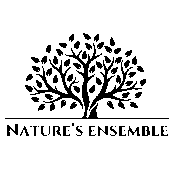Cities often seem at odds with the natural world, but they can also be powerful engines for ecological regeneration, community health, and collective well-being. Adopting regenerative city living enables urban dwellers to create resilient, flourishing environments while nurturing conscious connections to nature—right where they live.
What is Regenerative City Living?
Regenerative city living aims to move beyond sustainability—it’s about cities giving back more to nature and society than they take. This approach integrates clean energy, biodiversity, community participation, and circular economies to design urban systems that restore, renew, and revitalize their ecological and social surroundings.
Why Does It Matter?
- Resilience to Climate Change and Shocks
- Community Well-being
- Biodiversity and Public Health
- Resource Security
Adopting these principles helps cities, neighborhoods, and individuals thrive now and adapt to future challenges.
Practical Steps for Regenerative City Living
1. Support and Create Urban Green Spaces
- Advocate for more parks, pocket gardens, and green corridors.
- Participate in or initiate community gardening projects.
- Install green roofs or living walls in building spaces, even on balconies or rooftops.
- Encourage native planting to boost biodiversity and support pollinators.
2. Embrace Circular and Local Systems
- Reduce, reuse, recycle, and compost locally to create closed-loop systems.
- Choose locally grown food and products, reducing transport emissions and supporting community economies.
- Join or start local tool libraries and sharing platforms to maximize resource use.
3. Foster Nature Connection in Daily Life
- Integrate walking and cycling along green trails for your daily commute.
- Prioritize time outdoors: in parks, urban farms, or under street trees.
- Join nature walks or “urban safaris” that invite you to notice and celebrate city wildlife and greenery.
4. Champion Community-driven Solutions
- Collaborate in neighborhood initiatives to design, restore, or co-manage green spaces.
- Attend workshops or forums where residents co-create visions for their city’s future.
- Engage schools, businesses, and cultural organizations in eco-education and restoration projects.
5. Practice Resilient and Regenerative Design at Home
- Harvest rainwater for home or community gardens.
- Embrace energy-efficient technologies and renewable energy options.
- Use natural materials and upcycled items for home improvements.
- Integrate houseplants and balcony gardens for cleaner air and personal tranquility.
Key Principles of Regenerative Cities
Urban Inspiration: Real-World Regenerative Examples
- Ghent, Belgium: Urban renewal projects combining green infrastructure, reduced car use, and active community engagement, directly impacting over 10,000 residents.
- Düsseldorf, Germany: Revamped city fringes with more parks, mixed-use spaces, and green mobility, leading to a 20% emissions cut.
- Ljubljana, Slovenia: Ecological restoration, car-free zones, and city biodiversity planning.
- Curitiba, Brazil: Pioneered green corridors, urban agriculture, and waste-to-resource policies.
Conclusion & Call to Action
The regeneration of our cities starts with each of us. By embracing practical steps in regenerative city living, you help build healthier, more joyful urban environments that benefit both people and planet. Share these insights, start a conversation, or subscribe to NaturesEnsemble.com for more inspiration and guidance on your journey to an abundant, nature-connected life.
Internal and External Resources
- Related NaturesEnsemble.com articles:
- “How Community Gardens Transform Urban Spaces”
- “The Power of Urban Green Roofs”
- “Circular Living: A Path to Sustainable Cities”
- Recommended external links:
